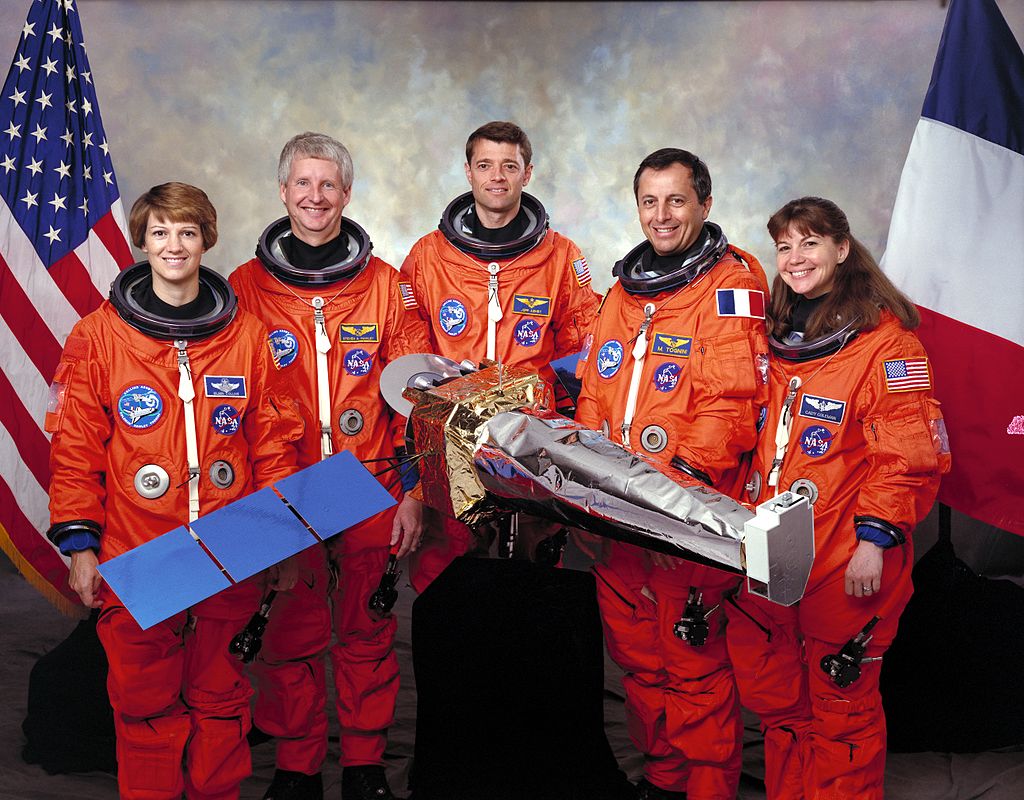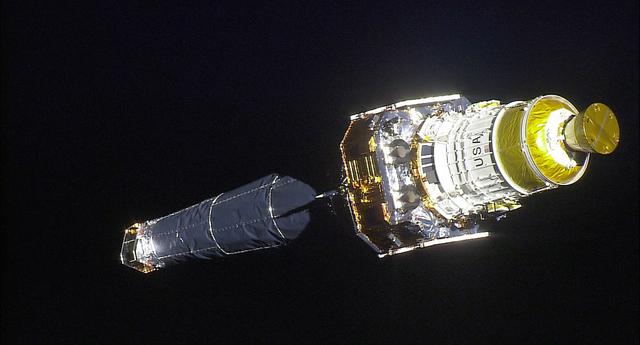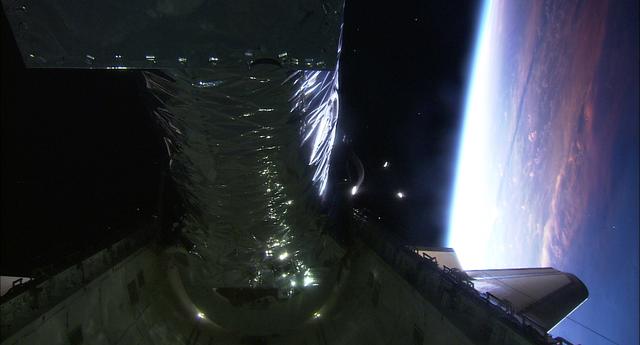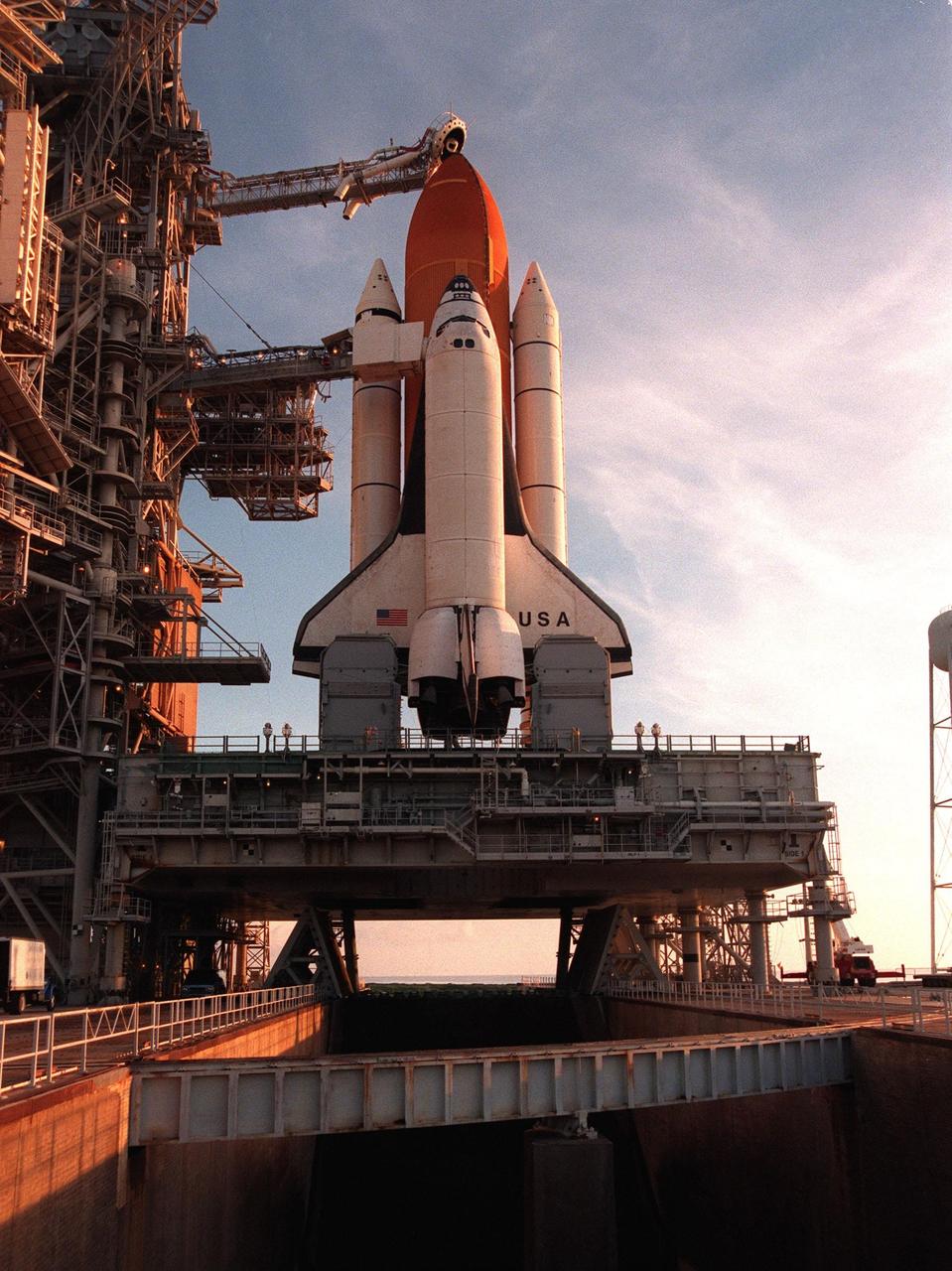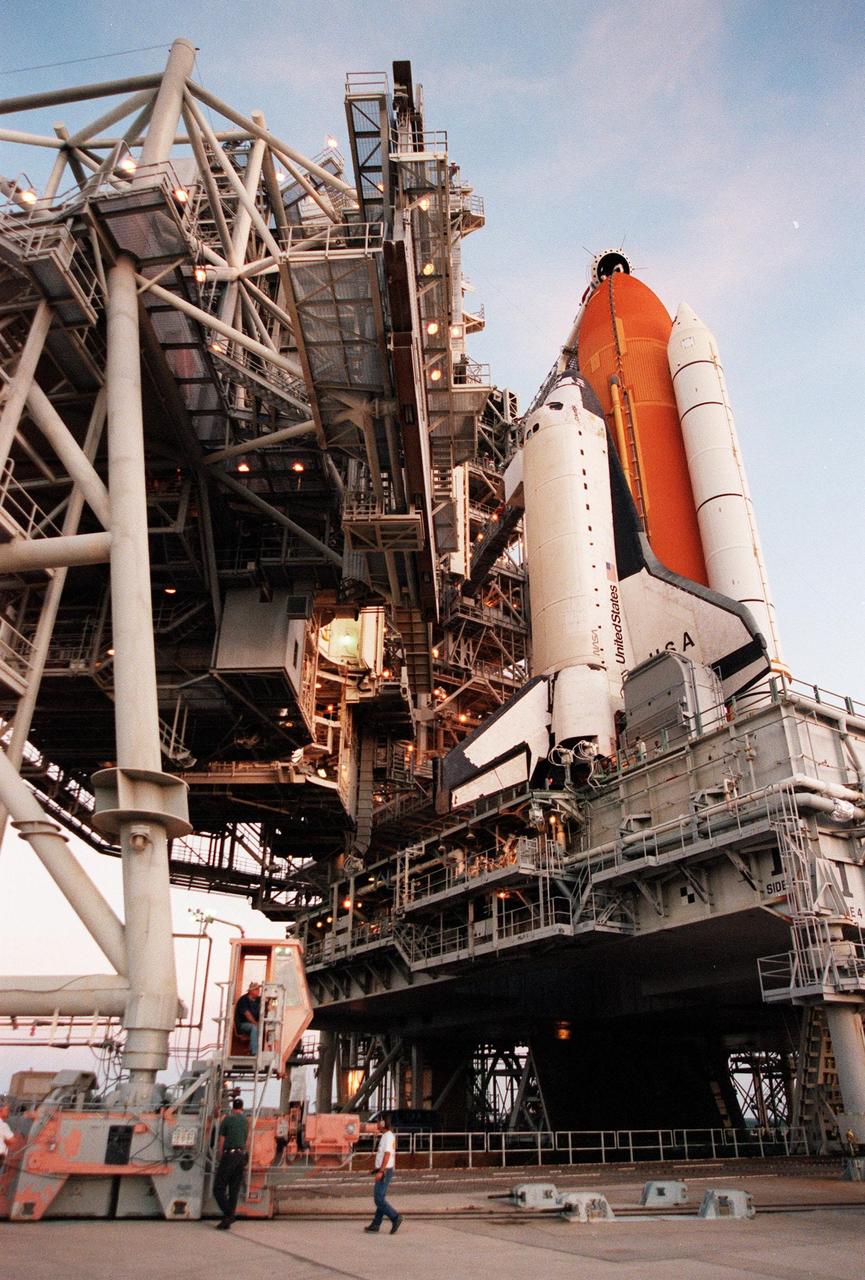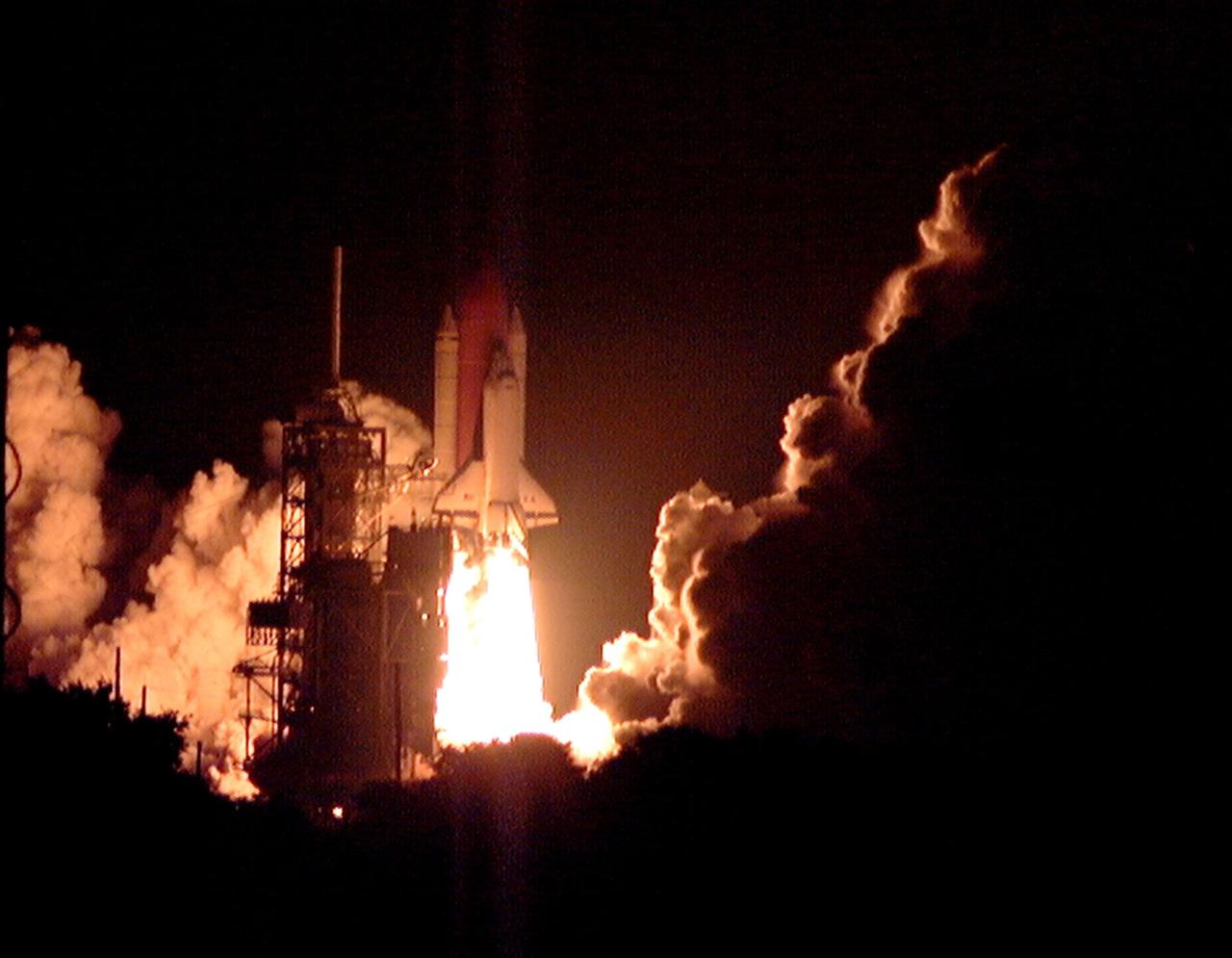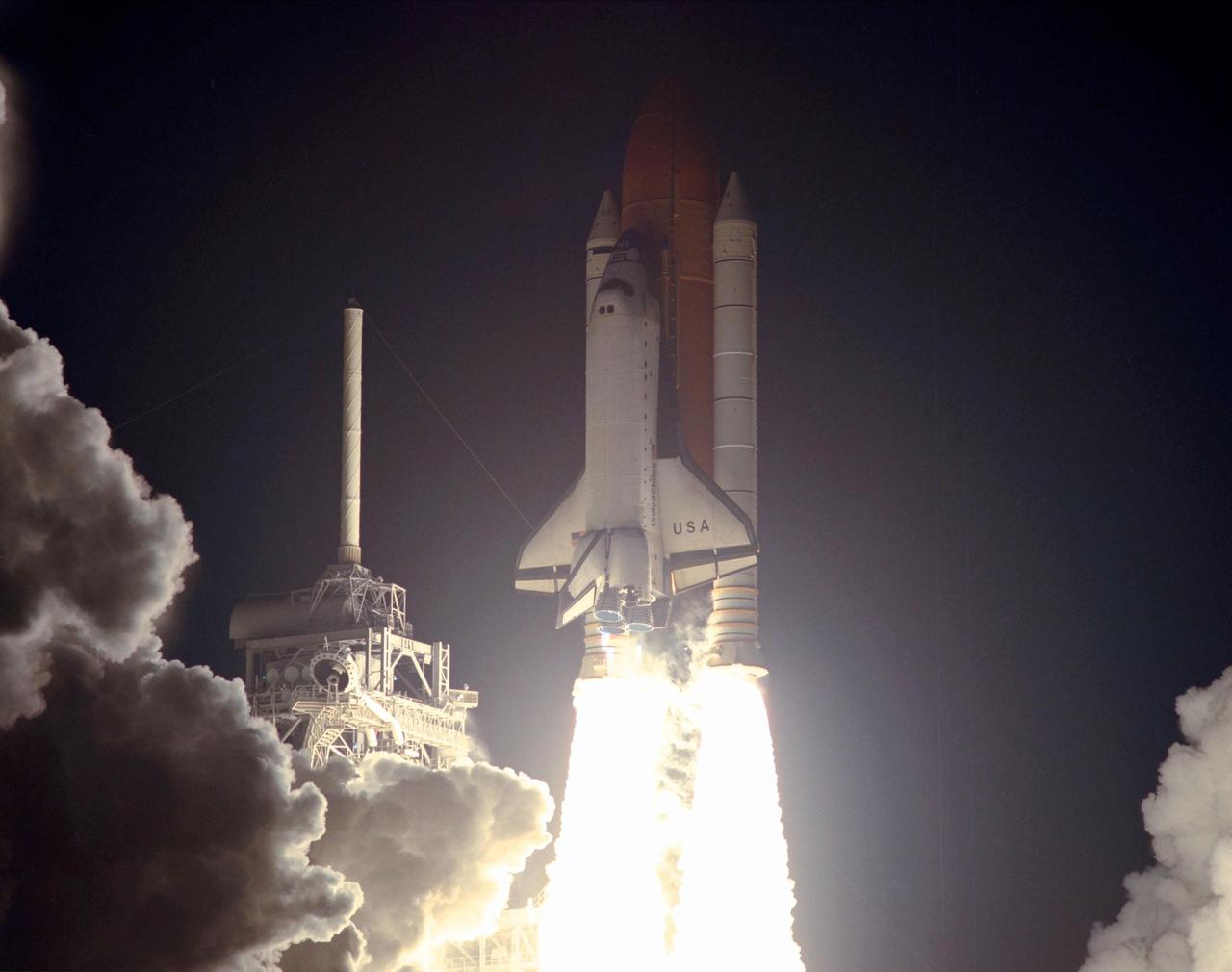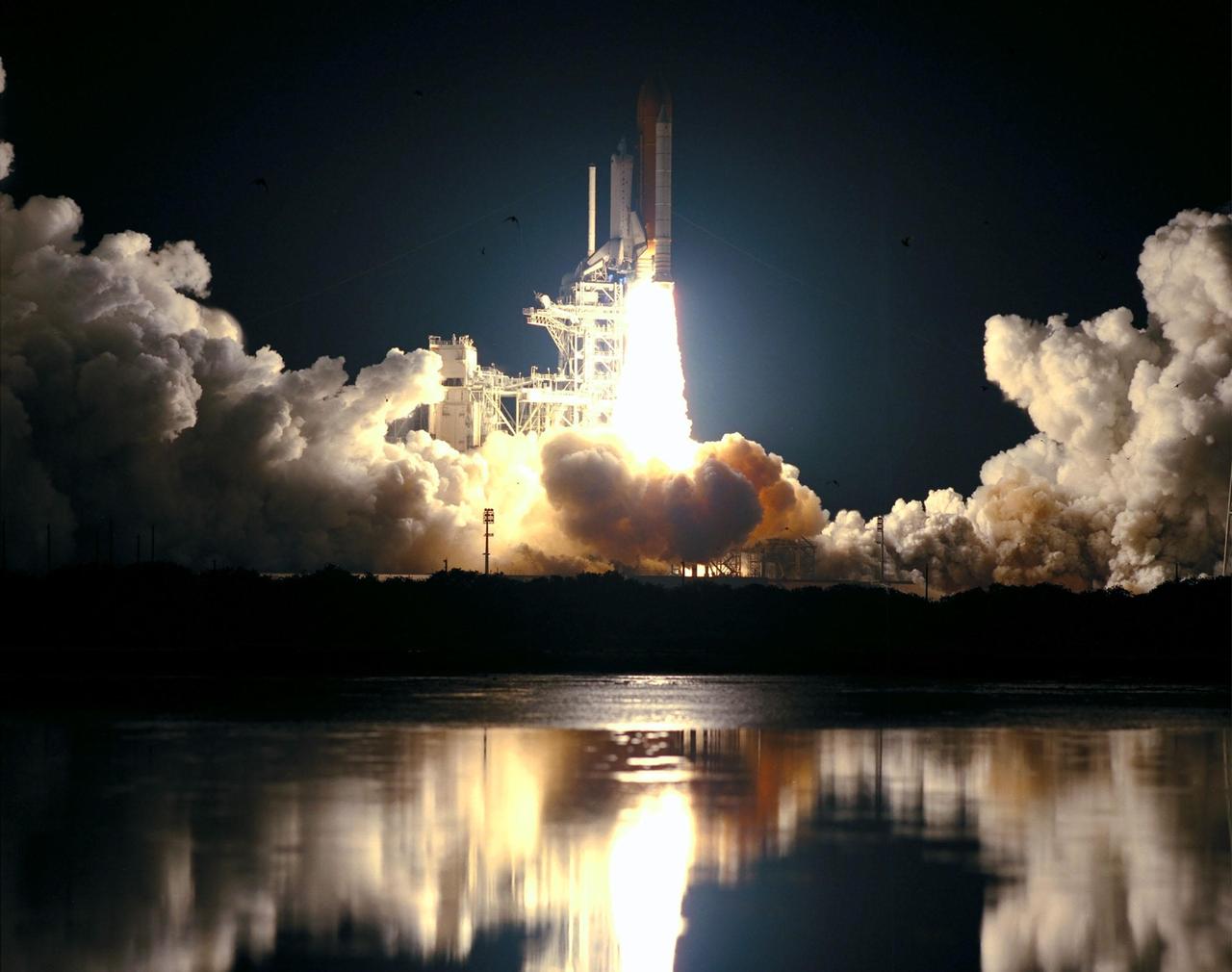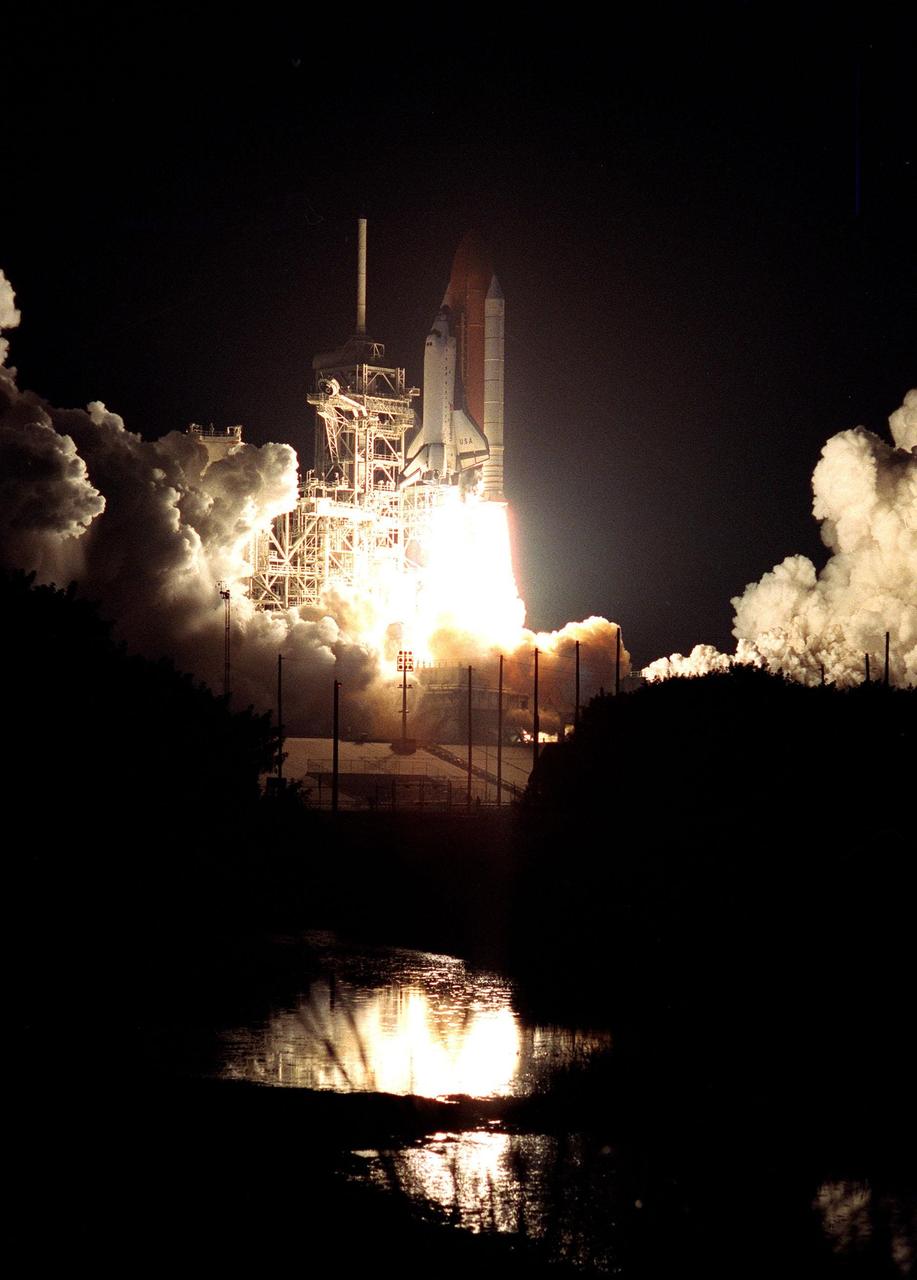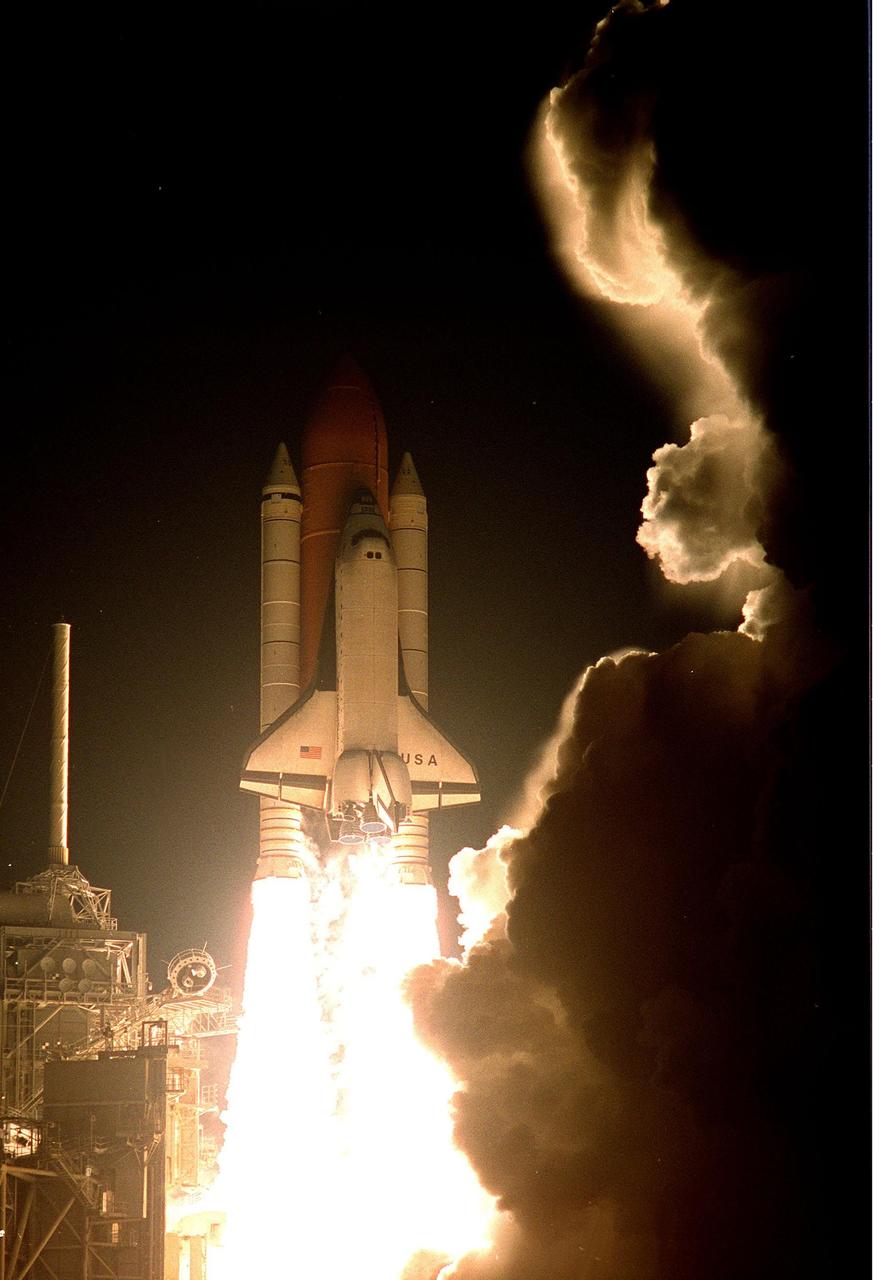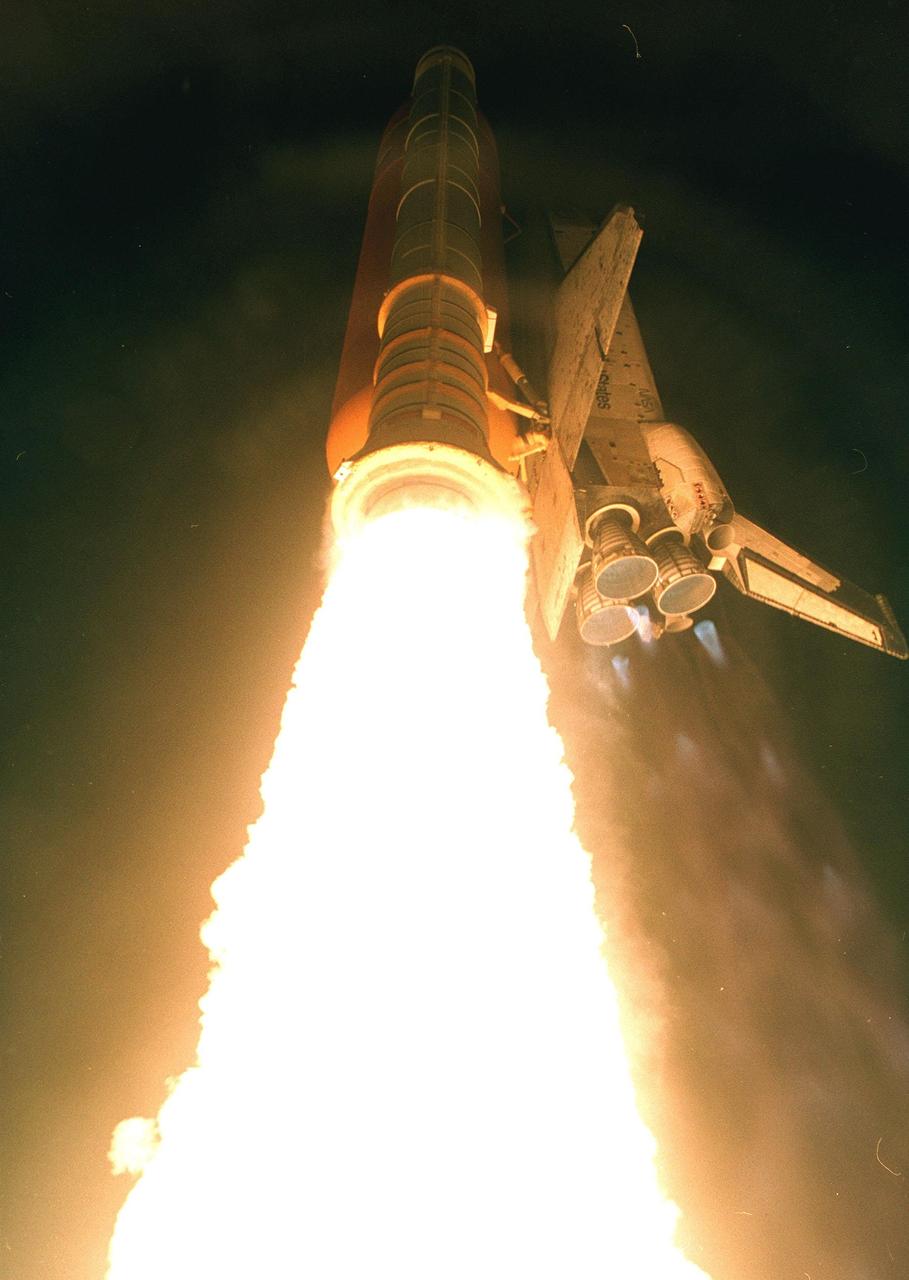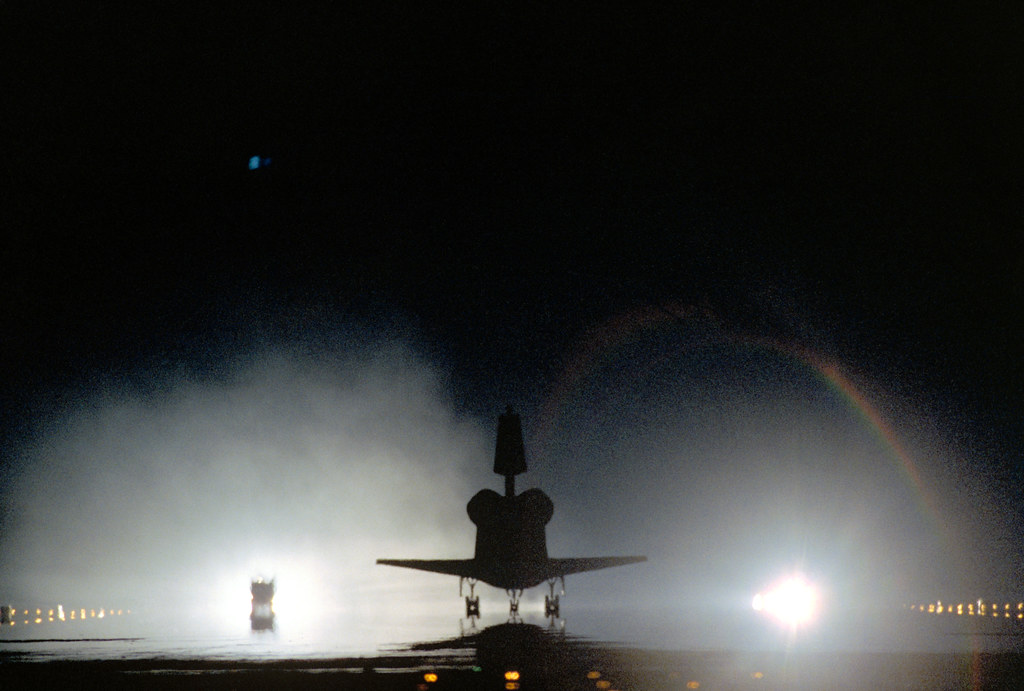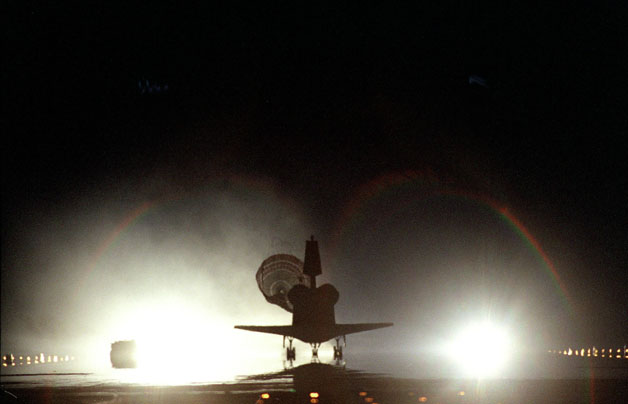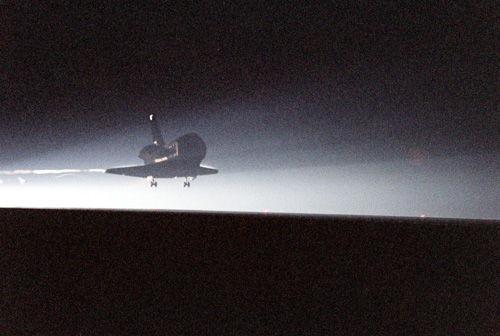STS-93 Fact Sheet
By Cliff Lethbridge

STS-93 — Columbia
95th Space Shuttle Mission
26th Flight of Columbia
Crew:
Eileen M. Collins, Commander
Jeffrey S. Ashby, Pilot
Steven A. Hawley, Mission Specialist
Catherine G. Coleman, Mission Specialist
Michel Tognini, Mission Specialist
Orbiter Preparations:
Tow to Orbiter Processing Facility – May 4, 1998
Rollover to Vehicle Assembly Building (for storage) – February 10, 1999
Rollover to Orbiter Processing Facility – April 15, 1999
Rollover to Vehicle Assembly Building – June 2, 1999
Rollout to Launch Pad 39B – June 7, 1999
Launch:
July 23, 1999 – 12:31:00 a.m. EDT. Launch attempt on July 20, 1999 was scrubbed at T-minus 7 seconds when it was determined that the launch window would be missed by less than one second. Earlier in the countdown, the Orbiter’s hazardous gas detection system indicated a 640 parts-per-million concentration of hydrogen in Columbia’s aft engine compartment. This would be more than twice the allowable concentration of hydrogen.
Analysis determined that the hydrogen readings were false, and the indicator was reset. However, resolution of this issue did not allow Columbia to be launched prior to the close of the launch window, and the countdown was halted just before Main Engine ignition.
Launch attempt on July 22, 1999 was scrubbed due to bad weather at the launch site. Launch on July 23, 1999 was delayed about 7 minutes due to resolution of a communications problem in the forward link to Columbia.
About 5 seconds after launch, flight controllers noticed a significant voltage drop on one of Columbia’s electrical buses. The voltage drop was sufficient to cause the Main Engine controllers of both the center and right Main Engines to shut down. An automatic switch was immediately made to redundant Main Engine controllers on both Main Engines, and flight performance was not affected.
Inspections conducted after Columbia returned to Earth discovered exposed wiring inside the Orbiter sufficient to cause arcing and short-circuiting. This was determined to be the cause of the Main Engine controller failures. An exhaustive wiring inspection of the entire Space Shuttle fleet was subsequently conducted, resulting in an unplanned five-month stand down of the Space Shuttle program.
Columbia reached an orbit about 7 miles lower than anticipated due to premature Main Engine cutoff. The premature cutoff was later traced to a hydrogen leak in the nozzle of Main Engine Number Three. The leak was caused when a liquid oxygen post pin broke off the main injector during launch, striking the hot wall of the nozzle and rupturing three liquid hydrogen coolant tubes.
Proper orbital altitude was later achieved through use of the Orbital Maneuvering System (OMS) and the mission itself was not affected.
Landing:
July 27, 1999 – 11:20:37 p.m. EDT at Runway 33, Kennedy Space Center. Rollout distance was 6,851 feet. Rollout time was 43 seconds. Mission duration was 4 days, 22 hours, 49 minutes, 37 seconds. Landing occurred during the 80th orbit.
Mission Summary:
Eileen M. Collins became the first woman to serve as Space Shuttle Commander. Primary payload was the Chandra X-ray Observatory, which was deployed on the first day of the mission. A two-stage Inertial Upper Stage (IUS) booster placed the Chandra X-ray Observatory in a transfer orbit of 205 by 44,759 miles in altitude.
Other payloads included the Southwest Ultraviolet Imaging System (SWUIS), which was used aboard Columbia to capture ultraviolet imaging of Earth, the Moon, Mercury, Venus and Jupiter.
Astronauts monitored several plant growth experiments and collected data from a biological cell culture experiment. The Treadmill Vibration Information System was used to measure vibrations and changes in microgravity levels caused when astronauts exercise aboard the Space Shuttle.
High Definition Television (HDTV) equipment was tested for future use on both the Space Shuttle and the International Space Station. NASA initiated testing of HDTV technology in order to meet the evolving needs of the television industry.
SELECTED NASA PHOTOS FROM STS-93
